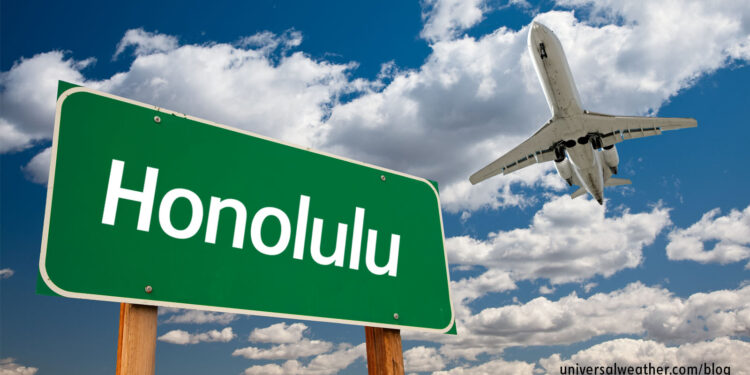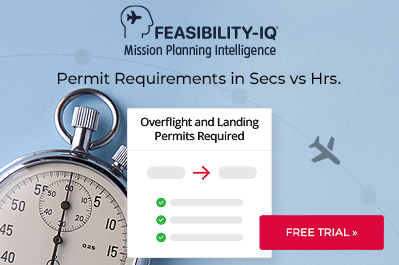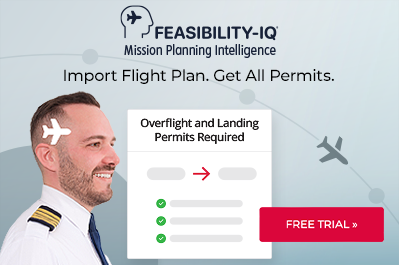Top Considerations for Business Jet Operations to Honolulu

This business aviation blog post is part of a series on operating in Hawaii and continues from our last article: “Top Considerations for PHKO – Part 2: CIQ.”
Honolulu (PHNL) is a business aviation-friendly location with 24-hour operations, full services, and credit. As with any landing rights airport, however, advance planning and notification are required. Below is an overview of what you need to know:
1. Be aware of airport considerations
Peak hours of operation at PHNL are 0700-1030 local. This is when high volumes of scheduled commercial operations take place, and Customs, Immigration, and Quarantine (CIQ) is busiest. During this time business aviation may experience delays due to scheduled commercial arrival congestion. If CIQ inspectors are not planeside, or at the fixed-base operator (FBO), on arrival, all crew members and passengers must remain onboard until the inspectors arrive. Tarmac and runways are in good condition, and there’s no airport construction scheduled at this time. PHNL currently has no operating curfews or noise restrictions. Airport slots and prior permissions required are not needed at this location.
2. Know agriculture restrictions
Hawaii is a quarantine state, and many items are not permitted to come in or leave the state from/to international locations or the US mainland.
Restricted items from the U.S. mainland include Florida-grown citrus, radish and turnip-type vegetables, and whole pineapples. For international arrivals a Customs and Border Protection (CBP) agriculture inspector will meet the arriving aircraft for inspection. All regulated garbage should be double-bagged and ready for removal. Most of the inbound in-flight catering – including dairy products – will be removed. A certified catering service will dispose of onboard catering, and the agricultural inspector will ensure that all such items have been removed. It is best to place a complete in-flight catering order for the next leg at least 24 hours in advance so that all requested items can be sourced.
3. Prepare in advance when operating to PHNL
Operations to PHNL are always smoother, and with less potential for delay, with appropriate pre-planning. When aircraft arrive from the U.S. mainland, personnel must complete a State of Hawaii agriculture form (one form per aircraft). For departure to the U.S. mainland, a United States Department of Agriculture (USDA) inspector will meet your aircraft, one hour prior to departure, and the FBO is not allowed to board any luggage or catering before the inspector arrives. The USDA agent will inspect all crew luggage and catering and wait planeside for the passengers to arrive. The agent will greet the passengers and inquire if they have any fresh fruit or plant items to declare. Restricted fresh fruits and vegetables can be ordered through a “Certified Catering Service” that will be safe-guarded, securely wrapped, labeled with the caterer’s USDA license, and listed “Do Not Open Until Airborne.”
4. Animal quarantine policies are strict
When you arrive in Hawaii with a pet, there is a five-day release program, and the pet must complete a series of tests three months prior to traveling to Hawaii. There are documents that need to be completed by the pet owner’s veterinarian and received by the State of Hawaii Animal Quarantine Branch in advance. Once the paperwork has been completed and approved, the animal can travel to Hawaii, but the FBO must be notified of the arriving pet. The pet must be brought to the quarantine office in a kennel. The FBO is required to fill out additional documentation as the “Airline Agent” responsible for transporting the pet to the quarantine office, and this clearance process takes only about 10 minutes. The quarantine officer will scan the pet’s “chip” to ensure that the office has all the necessary information and that the health certificate is in order. If the pet doesn’t clear this process successfully, it will stay in quarantine for the duration of its owner’s stay in Hawaii. Best practice, when you travel to Hawaii with a pet, is to communicate with the quarantine office in advance and ensure that all appropriate documentation be submitted prior to traveling. For more information please see the Hawaii government site on animal quarantine, or contact authorities at +808-837-8092.
5. CIQ procedures differ depending on destination
PHNL is a landing rights airport offering CIQ services 24/7 with 24 hours’ advance notice, and outer island locations should be contacted directly for inbound procedures. When aircraft operate to PHNL, operators must have a ground handler coordinate CIQ scheduling to confirm everything is in order before the estimated time of arrival. A complete crew and passenger manifest and full trip information should be submitted in advance for CIQ clearance. CIQ agents will come out to the FBO and provide a private clearance for the aircraft. In many cases clearance will actually be done onboard the aircraft unless there are large numbers of passengers onboard. The clearance process normally takes about 15 minutes. Electronic Advanced Passenger Information System (EAPIS)/APIS must be submitted in advance, and an inbound general declaration must be completed. Although luggage is not put through X-ray machines, screening officers do random luggage compliance checks within the FBO.
6. Consider hotel options
Be aware that hotel options are limited on the islands, and room supplies can be very tight at times – particularly mid-November through early January (high season). If you plan to arrive during high season, it’s best to book accommodations in advance (some operators book rooms six months prior to arrival). During peak travel times and busy periods, crew rates are sometimes not available, and hotels can charge premium prices. Outside of the high season, your FBO may have negotiated crew rates that have flexible cancellation policies and can help avoid daily “resort fees.” FBOs can also assist with short-notice accommodation requests, but choices may be limited. Normal cancelation policy on the islands is 48-72 hours prior to check-in.
7. Plan for local transport and in-flight catering
During high season rental vehicles may be in short supply, and your only options may be prepaid transportation (car and driver) or taxis. Your FBO can assist with ground transport requests, but it’s best to make these arrangements in advance. Be aware that in-flight caterers at PHNL do not operate 24 hours and usually close at 1700 or 1800 local. Options for last-minute catering may be limited. At least 24 hours’ notification is recommended when ordering catering, and plan on additional lead time for specialty items.
8. Understand special procedures for charter operations
US Customs wants non-US registered charter (non-scheduled commercial) operators traveling from PHNL to the mainland to obtain a “permit to proceed.” This indicates your next destination out of PHNL and must be entered with CBP at your next port of arrival. Your FBO can prepare this document, have it stamped by Customs, and have it ready for crew on departure. This document must be presented to your next US port, and it only applies to non-US charter flights traveling within the US.
Conclusion
When planning operations to PHNL, particularly during high season, provide as much information to your FBO as soon as possible. Advance communication is key when operating to this location. Ensure that all required services are requested in advance and that CIQ authorities have the information they need prior to your arrival and before your departure.
Later we’ll talk about operating considerations for Maui.
Questions?
If you have any questions about this article, contact Christine Vamvakas at christinevamvakas@univ-wea.com.




